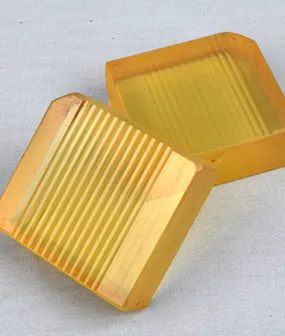Simple, Yet Profound

A few days after my last Light Moments article — a tribute to the 1971 OSA meeting in Tucson — posted to the OSC website, I received the following email from Brian Bauman, Ph.D. 2003.
“In case [you] didn’t know, the 1971 spring OSA conference was probably the first time that ‘lenslets’ (as made by Shack and Platt) were presented to the optics community. Forty-three years later, lenslets are still a cornerstone of wavefront sensing in adaptive optics and used in some spectrographs. The story of how the first lenslets were made deserves to be retold in the Light Moments column. It’s a great story of ingenuity and scrappiness.”
After a little research, I discovered a short publication, “Lenticular Hartmann Screen,” by Ben Platt and Roland V. Shack, in the March 1971 Optical Sciences Center newsletter. In four short paragraphs, they described their “recently developed testing technique that is a modification of the very old Hartmann test.”
In 1900 Johannes Franz Hartmann developed an aperture array as a means of tracing invidual rays of light through the optical system of a large telescope, thereby testing the quality of an image. In the late 1960s, professor Shack and then-Ph.D. student Ben Platt modified the Hartmann screen by replacing the apertures in the opaque screen by an array of lenslets. Later, this became known as the Shack-Hartmann wavefront sensor.

Lenslet mold photo by John Greivenkamp.
Shack and Platt’s lenslet array was made from a mold created by fine- grinding and polishing 50 grooves across the center of a disk of Cer-Vit glass with a concave cylindrical rod. Two square pieces (top and bottom of mold) were cut from the grooved area. A square plate of optical grade thermal plastic (Plexiglass) was thermally compressed — by heating in Ben’s home kitchen oven — between the two squares that were oriented at 90 degrees to each other. After cooling, the result was a cross-cylindrical positive lenslet array.
Provided here is a PDF of a 2005 article, “Historical Development of the Shack-Hartmann Wavefront Sensor,” by Jim Schwiegerling and David R. Neal, outlining the history of the Shack-Hartmann sensor and giving a more complete description of the lenslet fabrication process.
It is rare for a technology to have such an impact on multiple fields as the Shack-Hartmann wavefront sensor. Current applications in adaptive optics, astronomy, ophthalmology and optical testing are too numerous to list.
Raymond N. Wilson best summed up the importance of Roland Shack’s invention in an email sent to Pam Shack shortly after he received the prestigious Kavli Prize in Astrophysics in 2010.
"... In a just world, I would share my share with four members of the NTT-VLT team as well as with Lo Woltjer, but also with Roland Shack for inventing the Shack-Hartmann detector without which I would have had no suitable detector for my active optics. Also his method of making the first ones mechanically like a diffraction grating was masterly. It is extraordinary that the American astronomical and telescope establishment did not grasp the significance at the time. ..."
